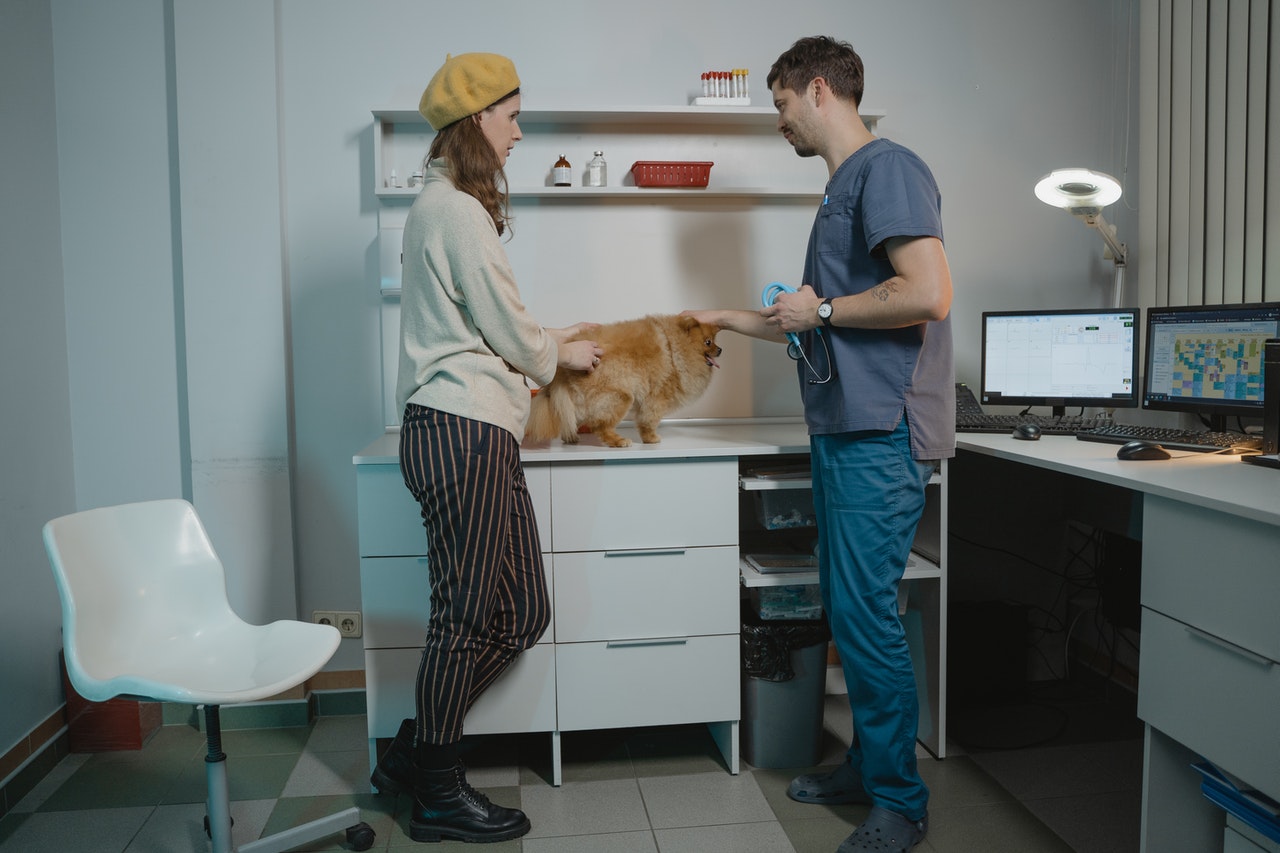It smells like stress and anxiety. The environment is strange and uninviting. In addition, the visit is associated with pain. No wonder so many dogs find the vet's office a place of horror. The good news: You can prevent and even take away the greatest fear of a super-sensitive dog.

1. Doctor game at home
Many things that the vet does during an examination are uncomfortable for dogs because they are unfamiliar with them. You can easily change that. Lift your dog onto a table or have him climb it. There he shall sit down (praise and tidbits). Inspect the ears, open the mouth slightly and examine the teeth. Accompany all actions with a cheerful voice, as if it were a new game. You can also insert a dog clinical thermometer into the anus. With defensive, sensitive dogs, it is an advantage if you do muzzle training. Step by step, of course, and rewarded with lots of treats.
2. The chemistry has to be right
Your pet practice should not be just any old pet practice, because a relationship of trust must be established between the practitioner and the person being treated. It is worth calling some practices, researching reviews online and asking other dog owners about their experiences. Then convince yourself - with or without a dog - that the patient is in good hands.
3. Nothing happens there
So that young dogs don't build up distrust in the first place, it's worth visiting the practice, where the dogs get to know all the employees, are stroked and spoiled with little treats. You can sniff the rooms and look around the (empty) waiting room. This pays off twice later. Because the young dog learns : The veterinary practice is an exciting place with friendly people.
4. It doesn't always get serious
For older dogs or those who have had a painful experience, stop by the practice several times and just walk by. The dog can detach, he can sniff and relax. If an appointment is actually due, he will not be afraid beforehand and the treatment will be easier.
5. No long waiting times
In most practices it's like this anyway: you make an appointment and get there promptly. Often it is possible that you stay outside until it is the patient's turn, rather than in the waiting room. This saves him and a lot of stress that other waiting patients could cause him.
6. Take a deep breath
Your mood always transfers to the dog. If you are afraid yourself, your four-legged companion will also tremble. So be sure to be in a good mood, force a smile, and be playful with your dog. Under no circumstances should you try to calm him down with words of pity or comfort. Because you do the opposite - he thinks his fear is justified.

7. The emergency responder at home
Not all, but many treatments can also take place in the familiar four walls. There are mobile veterinary surgeries that offer this, and in some cities animal rescue services that visit the patient. But your trusted veterinary practice can also examine and treat your four-legged friend at home if the panic problem is known. If that doesn't work, a sedative prescribed and tested by the vet will help.










